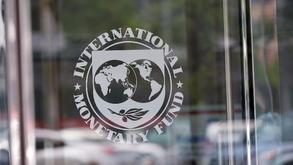 The seal of the International Monetary Fund is seen at the headquarters building in Washington, DC on July 5, 2015. (MANDEL NGAN / AFP)
The seal of the International Monetary Fund is seen at the headquarters building in Washington, DC on July 5, 2015. (MANDEL NGAN / AFP)
WASHINGTON - Member nations approved the biggest resource injection in the International Monetary Fund’s history, with US$650 billion meant to help countries deal with mounting debt and the fallout from the COVID-19 pandemic.
The creation of the reserve assets -- known as special drawing rights -- is the first since the US$250 billion issued just after the global financial crisis in 2009, with Managing Director Kristalina Georgieva billing it as “a shot in the arm for the world” that will help boost global economic stability. The SDR allocation will be effective on Aug 23, the IMF said in a statement Monday
IMF Managing Director Kristalina Georgieva said it will particularly help the most vulnerable countries struggling to cope with the impact of the COVID-19 crisis
“The SDR allocation will benefit all members, address the long-term global need for reserves, build confidence, and foster the resilience and stability of the global economy,” Georgieva said. “It will particularly help our most vulnerable countries struggling to cope with the impact of the COVID-19 crisis.”
The approval came just weeks after the IMF executive board approved the proposal. Final approval of the SDR allocation by the Board of Governors requires an 85-percent majority of the total voting power of all IMF members.
READ MORE: IMF board backs US$650 billion reserves distribution
The SDR can be exchanged among governments for freely usable currencies in times of need. The Chinese currency, renminbi, formally became the fifth currency in the SDR basket on Oct 1, 2016, joining the US dollar, the euro, the Japanese yen, and the British pound.
Reserves are allocated to all 190 members of the IMF in proportion to their quota, and some 70 percent will go to the Group of 20 largest economies, with just 3 percent for low-income nations. Overall, 58 percent of the new SDRs go to advanced economies, with 42 percent for emerging and developing economies.
Reallocation will be crucial to help countries in Africa, for which only about US$33 billion is earmarked in the SDR issuance. France has committed to reallocating part of its SDRs for countries on the continent.
South African President Cyril Ramaphosa has previously said that from the total allocation, about one-quarter -- equivalent to around US$162 billion -- should be made available to African countries. He has called on rich nations to donate -- and not just on-lend -- their allotments.
Georgieva said the IMF will also continue to engage actively with its membership to identify "viable" options for voluntary channeling of SDRs from wealthier to poorer and more vulnerable member countries to support their pandemic recovery and achieve resilient and sustainable growth.
ALSO READ: IMF chief: 'A shot in the arm' fastest way for global recovery
One key option is for members that have strong external positions to voluntarily channel part of their SDRs to scale up lending for low-income countries through the IMF's Poverty Reduction and Growth Trust (PRGT), the statement noted, adding that concessional support through the PRGT is currently interest free.


